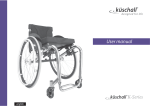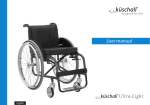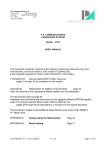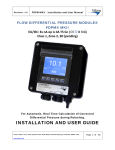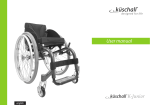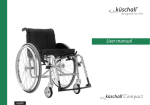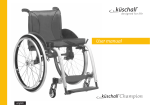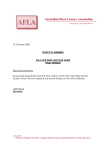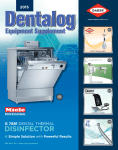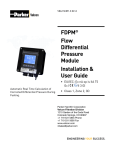Download led strobe light - YAP SWEE LEONG SDN BHD
Transcript
INFOLINE Issue 1 | April 2012 www.yslsb.com FIRESTONE RIDE RITE SYSTEM FOR COMMERCIAL VEHICLES pg 6 & 7 FIRESTONE VALENS LED LIGHTINGS NOW OPENED @ MID VALLEY MEGAMALL pg 9 MERITOR ANCILIARY EQUIPMENT pg 14 & 15 HALDEX TIRE PRESSURE MONITORING SYSTEM pg 16 & 17 UNDER PRESSURE? Tire Pressure Monitoring System All manufacturers names, numbers, symbols and description used in this newsletter are for reference purpose only and do not imply that any part or assembly listed is the product of these company. While great care has been taken to ensure accuracy in the compilation of this newsletter, the publisher cannot be held responsible for any errors, omission and / or losses incurred. Product Focus For more information (603) 6188 8388 [email protected] LED STROBE LIGHT All over the year, we have been looking for a good looking and dazzling strobe light that enhance and maximize the visibility. We are supplying the number 1 source for all of LED strobe light’s needs. We have led strobe lights for police, led strobe lights for dash and led strobe lights for third brake lights. LED STROBE LIGHT BAR We are also provides various kind of LED strobe light bars for police, fire brigade, ambulance, and security cars. These stobe light bar consist of changeable strobe patterns enable various kind of usage. We are bringing LED Warning lights to an affordable level while delivering quality products. We stand behind every sale and ensure our customers complete and total satisfaction. 02 Infoline Issue 1 | 2012 Product Focus For more information (603) 6188 8388 [email protected] DIGIMAX LED INTERIOR LIGHT Does your vehicle interior light look drab and bleak? We have the solution for you!!! DigiMax has introduced these hot new LED dome lights for vehicle interiors. These LED dome lights give off an uber cool-looking glow (cool white, 8000° K) that will set your vehicle interior apart from the rest. To top it all off, these lights draw less current, are 30% brighter and possess superior lifespan than conventional interior dome lights. These kits come complete as direct replacements to the factory installed dome lights. They can be installed in mere minutes with no tools required for installation. Multiple types of adapters are even provided for various light sockets (wedge, bayonet, standard 28mm, 37mm, and 42mm). Besides vehicle interiors, these lights could also be used as replacements for trunk lights. A B A Wedge Type B Bayonet Type C D 28mm 37mm E 42mm E D C Standard Type You’ll be able to distinguish it from the 5 types, (A) or (B) or (C) or (D) or (E) Pry the lampshade off the interior lamp from the interstices with a flathead screwdriver lightly. Please be careful trying not to damage the lamp and lampshade when removing. Take out the original interior Choose the suitable one from lamp. above (A, B, C, D or E) to connect into the LED device tightly. Put the new auto interior LED light back to the original location. If it doesn’t light up, please check and switch the “ * ” and “ - ” terminal. Put the cords in neatly inside and Place the lampshade back to the remove the sticker to stick the holder. Turn on the light to lamp on the lamp holder. confirm. Issue 1 | 2012 Infoline 03 Product Focus For more information (603) 6188 8388 [email protected] COMPARISON AMONG LED, CFL & INDUCTION LAMP CFL, the compact fluorescent lamp is a fluorescent lamp designed to replace an incandescent lamp; some types fit into light fixtures formerly used for incandescent lamp. The lamps use a tube which curved or folded to fit the space of an incandescent bulb, and compact electronic ballast in the base of the lamp. Nevertheless, these CFLs suffer on several aspect of problem as well. CFLs are very sensitive to temperature changes. Not advisable for applications where temperature can change from high to low frequently. This shortens the life of CFL. Probably the biggest issue right now for CFLs is the mercury content in the bulb. They do not work well with applications that require frequent switching between on and off. This process actually shortens the life of CFL. Induction lighting uses a special type of fluorescent bulb. Induction lights use a magnetic field generator to electrically excite the phosphorus coating on the inside of a glass tube. High quality bulbs can operate for 80,000 to 100,000 hours. The bulbs warm up much faster and with less energy than sodium vapor bulbs. This has led some municipalities to adopt induction lamps for street lighting. However, the technology is fairly new and still undercommercialized. Induction lights have been neglected in favor of LEDs by important policymakers such as the U.S. Department of Energy. Problems still exist with the technology such high installation cost, electromagnetic Interference, overheating, mercury, illumination quality, and difficult retrofitting. LEDs offer a huge variety of benefits but at the same time they cannot be viewed as the optimum soloution for every lighting-related application. Here, in no particular order, we list some of the main advantages of LEDs, together with some of the challenges faced by these devices. LED Compact Flourescent (CFL) Magnetic Induction Lights (MIL) • Works better in night time application due to its high Scotopic value • Scotopic value of the lighting not as good as LED since it’s flood lighting • Scotopic value of the lighting not as good as LED since it’s flood lighting • Better light control, and can put the light where it need • Good only for the area which need flood lighting • Works great in retail high bay areas where light is dispersed all over • Work great in high application over 30 feet e.g. high hills and highlands • Work great in high application over 30 feet e.g. high hills and highlands • Must be used in lower applications under 20 feet • Low heat output • High heat issue • High heat issue • The light can be flood or spot • Flood lighting only • Flood lighting only • Produces no Ultraviolet (UV) lighting • Produces Ultraviolet (UV) lighting • Produces Ultraviolet (UV) lighting • Contains no Mercury (Hg) and other hazardous material • Contains Mercury (Hg) and other hazardous material • Contains Mercury (Hg) and other hazardous material • Consists no magnetic field circulations • Consists no magnetic field circulations • Consists magnetic field circulations • Good performance environments • Moderate performance during cold environments • Moderate performance during cold environments • Low level of electrical radiation • High amount of electrical radiations • High amount of electrical radiations • Gives 100% of its lighting when switching on • Flicking and gives lighting from low to maximum • Gives 85% of its lighting when switching on and need time to warm up to 100% after few seconds • Good Life Span • Moderate Life Span • Moderate Life Span during cold • Scotopic vision is the vision of the eye under low light conditions. 04 Infoline Issue 1 | 2012 Product Info For more information (603) 6188 8388 [email protected] BENEFITS OF LED LEDs offer a huge variety of benefits but at the same time they cannot be viewed as the optimum solution for every lighting-related application. Here, in no particular order, we list some of the main advantages of LEDs, together with some of the challenges faced by these devices. Standardization The general lack of standardization in the LED field is an ongoing issue. Various standards relating to LEDs exist in areas such as automotive lighting and traffic signals. Low maintenance The long lifetime of LEDs reduces the need to replace failed lamps, and this can lead to significant savings, particularly in the cost of sending out maintenance crews. This also makes LED fixtures useful for installation in relatively inaccessible locations. Efficiency LEDs are high-efficiency light sources. White LEDs with efficacies of 100 lm/W and up are commercially available, exceeding the performance of incandescent and some fluorescent sources. Heat LEDs don't produce heat in the form of infrared radiation, which makes incandescent bulbs hot to the touch. The absence of IR radiation allows LED fixtures to be positioned in locations where heating from conventional sources would cause a particular problem e.g. illuminating food or textiles. Brightness Although LEDs have high efficiency and consume a small amount of power, the devices produce a small total number of lumens. Low power consumption The low power consumption of LEDs leads to significant energy savings that can often drive the installation of LED-based systems. Cost In many applications, LEDs are expensive compared with other light sources, when measured by metrics such as “ringgits-per-lumen”. Small form-factors LEDs are very small - typical high-brightness LED chips measure 0.3 mm by 0.3 mm, while high-power devices can be 1 mm x 1 mm or larger. Instantaneous switch-on LEDs switch on rapidly, even when cold, and this is a particular advantage for certain applications such as vehicle brake lights. Color LEDs are available in a broad range of brilliant, saturated colors (although performance varies across the spectrum), and white devices are also available. Modules containing different-colored LEDs (typically red, green and blue, or RGB) can be tuned to a huge range of colors, and easily dimmed. RGB modules provide a much wider gamut of colors than white LEDs or other traditional white light sources, which is a particular advantage in applications such as backlighting liquid-crystal displays (LCDs). Semiconductor processing Fabricating LEDs is a complex high-temperature process involving the growth of crystalline layers across the surface of a semiconductor wafer. The quality of these layers determines the properties of the LED. Environmental LEDs do not contain mercury and in many cases steps are being taken to replace lead-containing solders (used mainly to fix LEDs to circuit boards) with lead-free material, in line with European directives. The energy-efficient nature of LEDs also makes them environmentally friendly. Designability LEDs open up many new design options, some of which were previously inconceivable. Drivers LEDs are low-voltage light sources, generally requiring a constant DC voltage or current to operate optimally. Designing and implementing an effective driver is key to obtain all the benefits of LEDs. Issue 1 | 2012 Infoline 05 Product Focus For more information (603) 6188 8388 [email protected] FIRESTONE RIDE RITE SYSTEM FOR COMMERCIAL VEHICLES Firestone’s heavy duty Ride-Rite air helper springs are the workhorse of Firestone air helper spring line. The double convoluted air springs offer maximum load support as well as years of worry-free service. Firestone is committed to providing the customer with premium air helper spring kits. Ride-Rite air helper springs have become synonymous with quality, durability, and customer support. Each application is specifically designed to maximize the safe load carrying capacity, stability, and ride quality of the vehicle. Ride-Rite air helper springs utilize a pair of convoluted air springs which can be adjusted for changing loads. These air springs are capable of 1,450 to 2,260 kgs.* of load levelling capacity. Ride-Rite air helper springs enhance the ride by reducing inter-leaf friction. Please remember that air springs do not increase the load-carrying capacity of your vehicle. BY 06 Infoline Issue 1 | 2012 BY BY Product Focus For more information (603) 6188 8388 [email protected] Ride-Rite kits are application specific and are designed for hassle-free fitment to the OEM suspension. At Yap Swee Leong Sdn. Bhd., we have many years of experience dealing with Firestone’s heavy duty Ride-Rite systems, supplying them for commercial vehicles such as Weststar LDV Maxus, Toyota Hiace, Mercedes Benz Sprinter and many more. With our systems, we fit levelling valves to ensure the vehicle maintains minimum body roll and steady ride height during hard cornering and hauling asymmetrical loads. DO NOT EXCEED THE VEHICLE'S RECOMMENDED GROSS VEHICLE WEIGHT RATING (GVWR) Ride-Rite Air Helper Springs will: • Keep the vehicle level - improve steering control and braking effectiveness, level headlight beams and reduce tire wear. • Level off-center loads - individual inflation valves allow for adjustment side to side. • Reduce suspension fatigue - keep leaf springs from permanent sagging under repeated or constant load. • Reduce bottoming out - protective air cushion softens contact between the axle and frame. • Increase vehicle stability - absorbing road shock providing ideal ride conditions for passengers and load. Issue 1 | 2012 Infoline 07 Product Info For more information (603) 6188 8388 [email protected] choose to B stronger The Binotto Way of Construction BINOTTO SOLID DESIGN Stop-limit obtained on the pure pipe to provide the user with a maximum safety when the cylinder is wide open Binotto Global competitor Binotto Supremacy 08 Infoline Issue 1 | 2012 Event For more information (603) 6188 8388 [email protected] VALENS LED LIGHTINGS NOW OPENED @ MID VALLEY MEGAMALL On the 18th of December, Yap Swee Leong Sdn. Bhd. celebrated the opening of its new Valens LED Lightings store in Mid Valley Megamall, and it’s second location in Malaysia. On the heels of a blockbuster start for it’s first outlet at Viva Home Shopping Mall, Valens LED Lightings is starting to infiltrate the domestic LED lighting market by expanding into more regions. The modern and aesthetically designed store is located on the 2nd Floor, near the Centre Court (S-006) and carries all types of LED lighting solutions for both indoor and outdoor in addition to vehicular lighting accessories. To ensure exceptional customer service, our sales team is well versed in all things LED, and is able to propose various suggestions in accordance to the customer’s taste and requirements. With expanding business, comes expanding number of customers. Now, these loyal customers could join our two-tiered Member Loyalty Program (Classic & Premier) which rewards members with: • Special discount rates on selected items • Frequent updates regarding latest and hottest products on sale As an added incentive, any products returned after warranty date has lapse are entitled up to 40% discount on their new purchase, subject to terms and conditions. For more details on our company or products, please call us at 03-2201 9851 or email us at [email protected]. Please visit our Facebook page at http://www.facebook.com/valensledlighting LED LIGHTINGS Issue 1 | 2012 Infoline 09 Miscellaneous Parts Suspension Parts Transmission Anti-syphon Device TRANSHASIL SDN BHD 81 & 82, Jalan Kepayang, Taman City, 51200 Kuala Lumpur. Tel: +603-6253 1399 Fax: +603-6252 1699 Engine Parts (379482-A) The One-stop Quality Mercedes Benz Parts Centre EYL SACHS man y G er E M K6, 4½ Miles, Jalan Ipoh, 51200 Kuala Lumpur, Malaysia. Tel: +603-6252 6363 Fax: +603-6251 8452 E-mail: [email protected] KWP Product Info For more information (603) 6188 8388 [email protected] Anciliary Equipment Levelride II • New, highly cost effective design • Push in fittings suitable for 10mm nylon tubing • Unite constructed to IP68 standard • Push button is fitted with weather proof shrouds • Unique push/pull operation with reset centre button • Manual raise/lower override • Easy flange mounting • Weather proof 2 core cable • Non corrodible plastic lightweight unit Air suspension with raise/lower? Ideal for matching deck height to loading bay, but if the driver forgets to reset manual raise/lower valve to normal ride height, the result may be: • Damaged shock absorbers • Damaged shock absorbers attachments • Check straps ripped off • Bump stops damaged • Ruptured air springs In extremes, damage to welds attaching the air suspension to the chassis can occur, leading to the vehicle being unroadworthy and dangerous. Even if there is no immediate failure, all these components in an air suspension will have their service lives seriously shortened as a result of the driver’s momentary lapse. • Can you afford the repair bills which can be up to £1,000 including labour? • Can you afford the vehicle downtime? Meritor have the follproof solution. It is patented raise/lower control system with automatic reset to normal ride height. 14 Infoline Issue 1 | 2012 Meritor Levelride II The Levelride II system is a sealed, plastic unit, proof against water, road dirt, steam cleaning etc, with 1 simple push/pill button control. • Raise • Lower • Reset After raising or lowering the vehicle deck height for loading, the driver simply pushes the reset button, and the systems returns the suspension to normal ride height (A). If he fails to do this - no problem! The first brake application (B), no matter how light, will send an electrical signal from the vehicle stop light circuit (C) to the Levelride II and it will automatically reset the suspension to normal ride height (D). Never again, will an abent minded moment by the driver result in damaged air suspension and big repair bills. Product Focus For more information (603) 6188 8388 [email protected] Item Part No. Levelride II Height Limitation Valve Single Check Valves 41221565\II 41219774* 41223211* NOTE: Items marked thus * must be ordered in addition to the Levelride II system if required, see drawing No. 41221565 for installation and piping details. Why electrical actuation? During development of the Levelride II system, it was realised that taking a pneumatic signal from the brake system had significant disadvantages. • Reset would not occur if the first brake application was too light. • Cutting into the brake service line would interfere with brake response time and result in homologation problems - installations would be a notifiable alteration (VTG10). These problem are avoided Meritor’s Levelride II system. with • It always resets • It is fully compatible when retro-fitted • It is not a notifiable alteration The Levelride II system is designed for easy installation on new vehicles and has quick connect push in pneumatic fittings and electrical cable supplied. It may also be retro-fitted, by simply replacing the manual valve with Levelride II and re-routing the existing pipes according to the installation instructions provided. The Levelride II system from Meritor is covered by Overseas patent applications and UK Patent No. 2.237.780. Issue 1 | 2012 Infoline 15 Product Focus For more information (603) 6188 8388 [email protected] DANGER ADVERTED HALDEX TPMS A new standard in tire pressure monitoring The TPMS constantly measures the air pressure and temperature in the tires of trailers. It extends tire life, reduces fuel consumption and avoids vehicle breakdown or accidents due to flat tires. 16 Infoline Issue 1 | 2012 Product Focus For more information (603) 6188 8388 [email protected] Enormous potential A tire air pressure 20% below the recommended level reduces tire life by 20%. As for tractor vehicle fuel consumption: a 20% drop in air pressure means about 2% increase in fuel consumption. Fuel represents on average between 15% to 25% of the company expenses, the savings potential is then considerable! Haldex TPMS measures not only the pressure but also the temperature of the tires. An underinflated tire gets hotter than a properly inflated one. And there can also be situations where a tire is properly inflated but its temperature is too high (due to radiation from the brake or a roller bearing in bad condition e.g.). Tire life Optimisation 10 20 30 LOW PRESSURE AREA -20 -10 HIGH PRESSURE AREA 0 10 20 Delta P from tire reference (%) 40 8 HIGH PRESSURE AREA 6 4 2 0 -2 LOW PRESSURE AREA -40 -20 0 CO2 emission (g/km) 10 Fuel consumption (%) Tire life reduction (%) 0 40 Less CO emission2 Less fuel consumption 20 10 0 20 Delta P from tire reference (%) Haldex TPMS at a glance 30 3 6 9 12 Pressure control by driver / per year Flexible attachment of the sensors Haldex’s ‘flexible’ attachment system provides a degree of freedom to the sensor if it gets bumped by the tire bead. The other major advantage of a ‘flexible’ attachment is its versatility: it can be used on all types of rims and profiles. The sensor, located in the drop centre of the wheelrim, is only 40 mm wide. The Haldex TPMS monitors both the pressure and the temperature of each individual trailer tire and is fully integrated in the Haldex EBS for semi-trailers. › Constant measuring of tire pressure and temperature › Prevented breakdowns and saved costs › Less fuel consumption › Extended tire lifetime › Reduced CO2 emission › Easy servicing Calculate your saving on www.haldex.com/TPMS You will be astonished how quickly the Haldex TPMS pays for itself. 006 700 028_GB/09.2011/ Weyersheim Haldex TPMS stands for more safety on the road. Issue 1 | 2012 Infoline 17 Technical Info For more information (603) 6188 8388 [email protected] TIRE SELECTION PROCESS Purpose This Recommended Practice is intended to make the tire purchaser, fleet operator, or maintenance manager aware of major items for consideration, and to provide a step-by-step thought process for selecting the best type of tire for the application. The following sections provide a brief explanation of the various tire selection criteria that must be addressed. A summary of considerations is also listed to enable the decision-maker to identify advantages and disadvantages of each of the selection criterion. If higher steer tire pressures are required, this may mean you’ll be using different inflation pressures for drive and trailer tires. While the considerations may not be all-encompassing, they point out the major issues that should be dealt with before selecting a tire. Because of the pace of technology change in the tire industry, certain considerations may become less important while new ones may arise from time to time. Be aware that all tire use selections will have advantages and disadvantages depending upon vehicle design and vocation. Make certain your choices are in line with your perceived fleet needs and contact your tire suppliers for expert assistance in making your selection. Tire Clearance Restrictions New Equipment - When spec’ing a new vehicle, the prospective owner can be quite imaginative in creating a vehicle that meets specific needs. Tires, however, may be the limiting factor to this creativity since they must be capable of carrying the expected load and be made to certain minimum dimensions. The fleet owner can choose from several types of tires that can carry the anticipated load, but may be forced to redesign a vehicle’s overall dimensions if the tires that can carry the load are larger than originally desired. 18 Infoline Issue 1 | 2012 Tire Clearances - In order to select a new tire size for a given application, the dimensional clearance of the tire must be acceptable. The following define those areas that must be checked: 1. Vertical Clearance is the distance between the top of the tire tread and the vehicle immediately above it. This clearance varies as the axles operate. The vertical movements of the whole axle in relation to the chassis are normally limited by an axle stop. To determine vertical clearance, subtract the axle stop clearance from the total clearance above the tire at rest. 2. Front Tire Clearances are the distances between the front tires (on both steering lock positions) and the vehicle. Clearances of front wheels must be checked by turning the wheels from full left lock to full right lock, since the minimum clearance might occur at some intermediate point. Introduction The process of determining which tire to select for a particular job or operation may sometimes seem difficult or complex. Indeed, the proper selection involves a myriad of decisions concerning the size, the type, and the tread design of the tire based upon the intended application. Other considerations are the manufacturer of the tire, the tire dealer, price, availability, and the warranty coverage which comes with the product. However, there is a logical method for selecting which kind of tire would be most appropriate depending upon an assessment of the many considerations surrounding the fleet operation. must be given to the effects the new size tire will have on the gear ratio. Some change may require a different rim (width, pressure limits). Existing Equipment - When changing the type or size of tires used on existing equipment, space restrictions are more inflexible. Not only must a tire be selected that can carry the load, it must fit in an existing space. In addition, when changing tire sizes on an existing power unit, consideration 3. Overall Width - When fitting larger or wider tires to an existing vehicle, the overall width across the dual tires is increased by half of the increase in the section width of each outside tire and the increase in offset of each outside wheel. The overall width across the tires is measured at the twelve o’clock position and not at the lower side (six o’clock position) where the tires deflect due to load. When using tire chains, a minimum of two inches more clearance is needed to provide clearance between the dual assembly. Technical Info Rims And Wheels The selection of rims or disc wheels goes hand-in-hand with the selection of tires. When ordering new equipment, specifying the recommended rim for the tire size selected will ensure optimum performance. Rims are identified by a diameter and width and, in the case of tube-type rims, also with a type code. The type code designations are used on tube-type products to help identify rings and rims for interchangeability. For example, a 20 x 7.5 FL rim would have a nominal diameter of 20 inches; a width between the flanges of approximately 7.5 inches; and be a FL type rim. Other typical type codes are: CR, 5°, LB, and LW. It is important that the rim size be approved for the tire being used. This assures proper fit and performance of the tire and rim. The tire or rim/wheel manufacturer’s data book or Tire & Rim Association Yearbook (or equivalent), and www.goodyear.com/truck specify approved rims for each tire size. When selecting the correct wheel or rim type, it is important to determine the operating conditions to which the wheel or rim will be subjected. Conditions to consider are loads, speeds, road surfaces, use of bias or radial tires, tire pressure, tire size, and the use of tube-type or tubeless tires. Caution is necessary in selecting wheel/rim offsets to ensure proper tire spacing, body and chassis clearance, and overall track width. If dual tires are used, dual spacing and tire clearance must be considered. Take precautions to ensure that the rim and wheel not only have the approved contour, but also have the load and inflation ratings sufficient for the tire in the intended application. For more information (603) 6188 8388 [email protected] For more detail in selecting the correct wheel/rim, refer to TMC RP211A, Rim and Wheel Selection and Maintenance. Radial and Bias Tire Construction There are two basic types of tire construction - radial and bias - that must be considered when choosing either a replacement tire for certain applications or when spec’ing new tires on an original equipment vehicle Figure 2.1. over-the-road applications. Radial tires typically are used in applications where heat build-up with bias ply tires is a problem. With the many improvements to radial tire construction made in recent years, the radial tire is now used in virtually all types of service conditions. Bias ply tires are constructed of overlapping crossed layers of cord material and are typically made with nylon, polyester, or other materials. The crossed plies run on a diagonal from tire bead to tire bead and comprise a generally stiff sidewall area. Sometimes, extra crossed plies or breakers are used under the tread area to further stiffen the crown area and provide better wear resistance or other performance parameters (such as puncture resistance, etc.). Radial ply tires are made with the cord material running in a radial or direct line from bead (at 90 degrees to the centerline of the tire), and are typically made with one steel body ply or multiple body plies of other materials. Under the tread area, the radial tire usually has three or four crossed plies or belts made of steel cord to stabilize the crown area and offer better puncture resistance. The radial sidewall area is generally less stiff than the bias ply sidewall, though the tread area is normally much stiffer. Bias ply tires have been designed over the years to perform in many different types of applications from all-highway to on-off road, to all off-road service conditions. With the advent of the radial tire and some of its inherent advantages, the bias tire is now used much less frequently in long haul GOODYEAR Radial Truck Tire & Retread Service Manual Section 2 • Tire Selection Issue 1 | 2012 Infoline 19 RS305 ROLLOVER SENSOR PURPOSE: Designed to meet AS2809, “Purpose built road tank vehicles designed to carry dangerous goods in bulk shall be fitted with a rollover device which automatically shuts down the engine and all power sources in the case of a rollover, by activating the battery isolation switch. The device shall not be activated at less than 45° to the vertical.” In the event of a tanker tilting more than 45° from the horizontal, power from the truck battery to all electrical equipment is cut to remove possible source of product ignition that may cause fire or explosion. The sensor is also used to operate a Liquip engine strangler to ensure the truck motor stops. ADJUSTMENT OR SERVICE: Sensor testing is recommended when standard maintenance is carried out on the tanker (typically every six months). A hinging base is provided to provide simple testing of the sensor. Remove one of the humpback pins and tilt the sensor body until it reaches the stop. At this point all electrical circuits will have no voltage and truck engine will stop. A unique “self diagnosis” tool indicates rollover sensor functionality. A steady bright green LED indicates the rollover sensor is horizontal and functional. A steady bright red LED indicates the rollover sensor is tilted past its activation angle. The Roll-Over Sensor minimises the risk of electrically ignited fires occurring in tanker accidents involving roll-over. In the event of a tanker tilting more than 45º from the horizontal, power from the truck battery to all electrical equipment is cut to remove possible source of product ignition that may cause fire or explosion. TECHNICAL DATA: • Operating voltage range: 9V to 30V DC. • Operating temperature range: -20degC to +80degC. • Complies to Australian Standard AS2809 -1999. • IP67 rated. • Reverse polarity protected. • Immune to power surges and outages. • If the sensor loses power, it won’t actuate the emergency mains switch The sensor is also used to operate a Liquip engine strangler to ensure the truck motor stops The roll sensor was extensively tested to determine the exact timing of deployment. HOPS will not deploy during a frontal or side-impact crash. A roll sensor calculates both the angle of the vehicle and the speed at which it’s rolling to determine when to fire the airbag restraints. ISO 9001 : 2008 (312334-P) H O E N I X TM Lot 11B, Jalan Perusahaan Dua, Kaw. Perusahaan Batu Caves, 68100 Batu Caves, Selangor D.E Malaysia. Tel: +603-6187 3888 Fax: +603-6187 6888 E-mail: [email protected]



















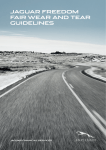
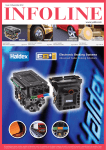
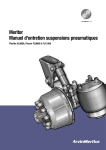
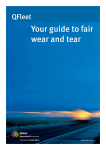
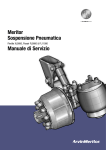
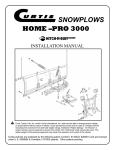
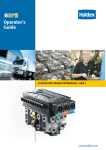

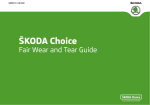
![Trailer Roll Stability (TRS) Installation Manual [L30040]](http://vs1.manualzilla.com/store/data/006020641_1-040a22153212ab13bbec744ca183c148-150x150.png)
